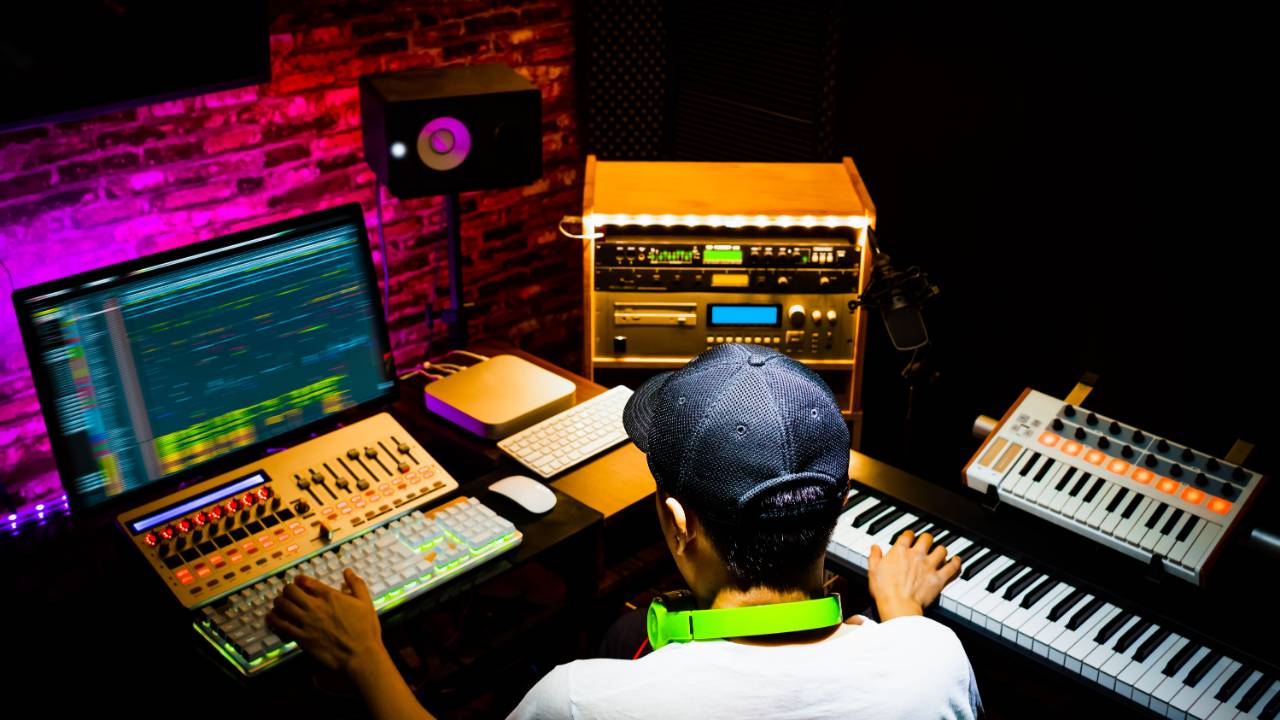
We’re gonna cover 4 EQ tricks I use to get the most out of each mix
1 - The low-end scoop
This is one of the most beautiful equalization tricks I’ve learned this year.
I go to various elements of the track, like;
- The 808
- The bass
- The melody bus
- The drum bus
- The master track,
and I create an EQ cut from 100 to 400 Hz that looks sort of like this.
In simple terms, this is going to;
- boost the power of the low-end by reducing/removing certain frequencies, and
- Change the phase relationships of all present frequencies.
What this actually does is create manual distortion because distortion is just an equalization concept (everything is an equalization concept, to be honest).
You get ‘distortion’ (change in waveform) by changing the shape of the frequency waves, which is more or less what this EQ cut does.
That’s the best way I can explain it without making your brain (or mine) explode.
But we will be going deeper on this when we do our distortion module later this year.
One last thing to note is that many popular bass heavy tracks will have a similar dip in their frequency distribution (I learned this from this video here - that’s where the screenshots came from).



2 - The ‘Disco Smile’ (The ‘Trap Smile’)
This is something that my mentor showed me right when he started teaching me.
The disco smile is an EQ set up that will boost all the frequencies most pleasing to the human ear.
Here’s what it looks like:
This EQ gives clarity to your track from the boosted highs, and power from the boosted lows.
I also learned this from a sseb tutorial that you can check out here (go to 11:06 for the info on the disco smile).
And I think sseb put it best; ‘It just sounds good.’
My mentor added his own flare to this (and this is why he’s a genius to me).
From mixing Grammy-nominated tracks and engineering audio for Emmy-winning shows, he discovered that modern music listeners enjoy frequencies around 500 hz and at 2000 hz.
So he actually calls his new version the ‘trap smile’, because trap is the biggest music genre in the world right now
That’s why the ‘disco smile’ has its name; it was developed when disco popularity was peaking during the 1970s (sseb does a good job of explaining this in his video).
Here’s an example of what my trap smiles tend to look like 👇
3 - Attenuate Trap Hats
This is another gem my mentor showed me, and it’s a banger.
Trap hi hats are really loud and sharp right at about 6800 - 7300 Hz.
This can cause a lot of gross resonance in your mix that can be fixed with a simple EQ that looks like this 👇
This will make your beat sound cleaner overall, and even lets you turn up your hats a bit without having them ruin the mix.
The key here is to just make sure to move the attenuating cut to wherever the frequency distribution shows that the hat is the ‘most powerful.’
This requires you to use your eyes and ears.
You can actually do it just by listening, but having the spectral graph is helpful!
4 - Rolling Off Warmth From Bass Elements
This is something I’ve been forced to learn from spec’ing into a bass heavy style of producing.
I’ve developed many tricks for helping me drive my basslines and 808s harder without ruining my mix.
An EQ like this;
allows me to turn up my 808s without having their high end frequencies interfere with the melody or other drums.
And then, as we’ve discussed, this high pass (or low cut) can be helpful for cleaning up some low-end trash coming from your 808 👇
This is sort of a ‘case-by-case’ thing. You don’t always need to do it, but here are a few use cases where I’ll break it out in my own productions;
- If the 808 I’m using has a powerful kick transient, I will use this high pass to make it fit better with the kick; if there’s no kick in the beat, I wouldn’t do this - I’d actually want the power from that kick transient.
- If the 808 is so low in key that it creates grumble, I will use this high pass to clean up some low-end muddiness
- I will generally bypass test this high pass from time to time, just to see if it improves the balance of my mix.
We made it 🧙♂️.
Our 3 part module on equalization is done. You can review past lessons here 👇
- Lesson 1 - Equalization is 80% of mixing
- Lesson 2 - How understanding ‘fundamental character’ makes our beats and melodies better
If you need even more mixing gems, check out this 3-hour workshop on my channel 👁️.
Blessings,
Darth Chu
Get Sound Kits 👇







